Multi Currency
1. Installation
Once installed and activated, Multi Currency will be ready to be configured.
Upgrading from Aelia Currency Switcher?
If you are currently running the Aelia Currency Switcher plugin, we have made it easy to transition to our system.
Our Multi Currency extension will migrate all of your Aelia currency settings.
Important: You will need to have the Multi Currency extension active before running the EDD 3.0 database migration. Additionally, the currency switcher widget will need to be manually changed to the new Multi Currency widget.
2. Settings
The settings for this plugin can be found under Downloads > Settings > Payments > Multi Currency.
Once you open the settings page the first thing you need to do is obtain an API key for the Exchange Rates provider. By default, the extension comes with an integration for openexchangerates.org.
Once you create an account with them please navigate to their Dashboard > App IDs page and in the Name field enter a name that will remind you what the key is for and click the Generate New App ID button.
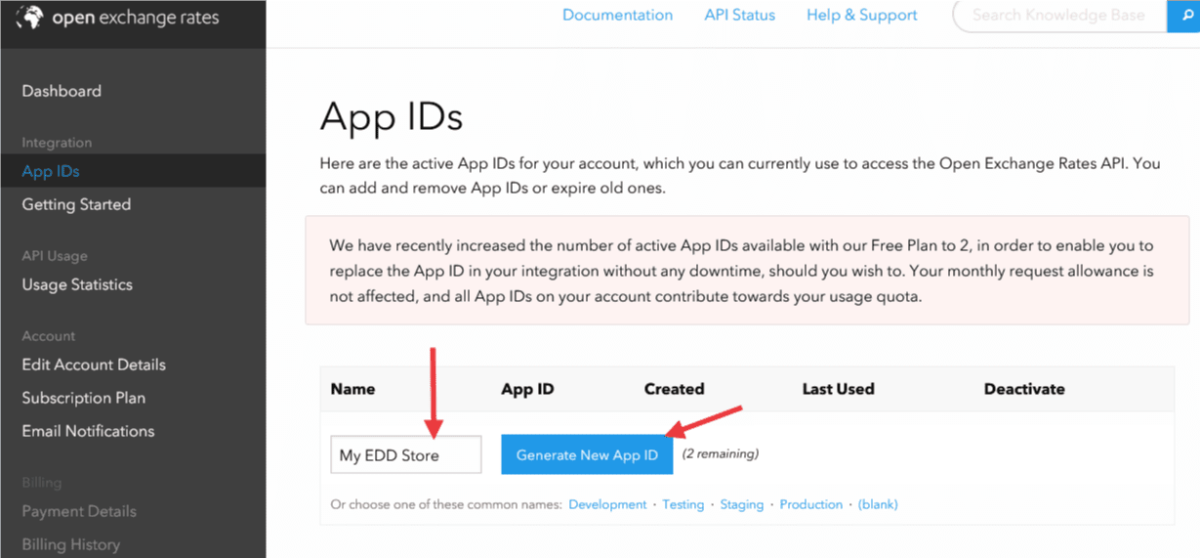
With the App ID now generated you can copy that key from the page and return back to your EDD Multi Currency settings page.
At the bottom of that page, you can now paste the App ID that you copied from openexchangerates.org
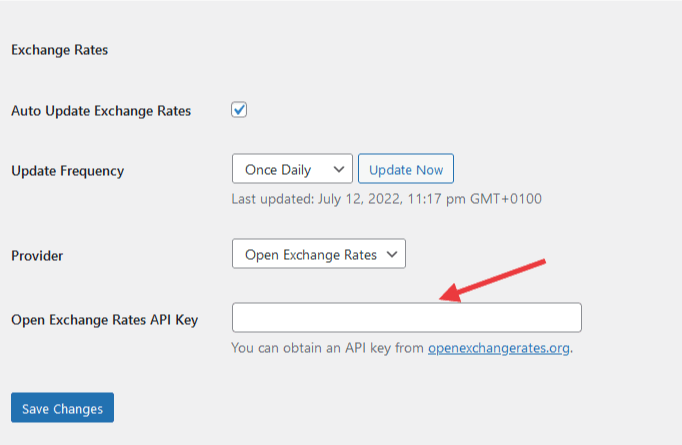
If you wish for the extension to automatically update the rates daily so that you can always have the most accurate rates you can also check the Auto Update Exchange Rates box and then click Save Changes.
If you decide you don’t want to automatically update the rates you will have to open the Multi Currency settings page manually and click the Update Now button to get the latest rates.
Now it’s time to add another currency or more to your Easy Digital Downloads store. At the top of the page, we will be using the Add New Currency table to add a new currency.
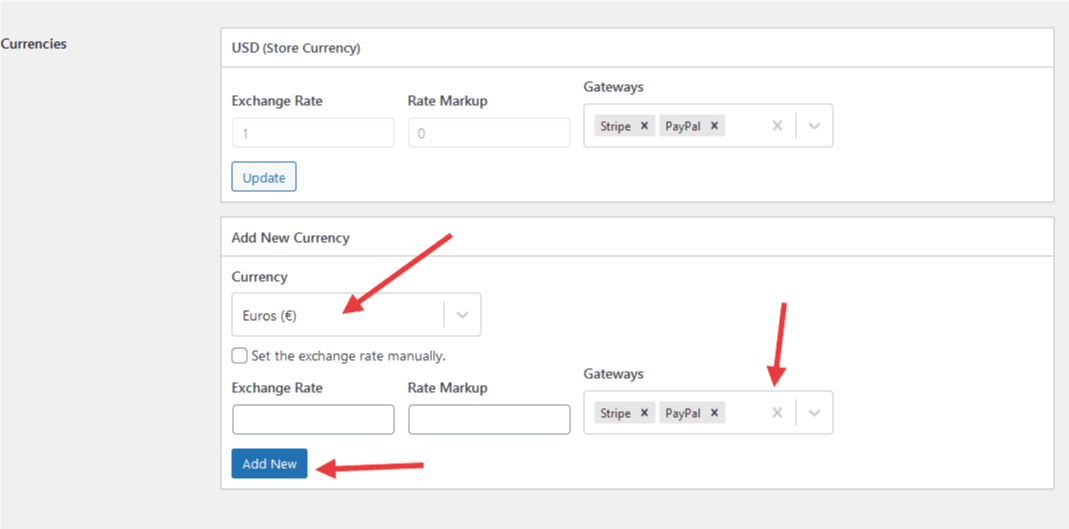
In the Currency field select the currency that you wish to add and in the Gateways field select the payment gateways to which this currency applies. For this field, you will select all the active payment gateways that you use on the website.
Once the new Currency is added you can click the Update Now button at the bottom of the page and it will automatically update the exchange rate for all your added currencies.

If you wish to manually set your exchange rates you need to check the box Set the exchange rate manually for the Currency that you wish to manage.
Add in your Exchange Rate and Rate Markup values and then click the Update button.

Once the rate has been updated in the Exchange Rate field your store is ready to use it!
3. Displaying the Currency Switcher
The extension comes with a widget that you can add to your website so that customers can easily switch between different currencies.
To set this up, you’ll first need to go to the Dashboard > Appearance > Widgets page. Select the location where you wish the Currency options to show and search for the EDD Currency Selector widget.
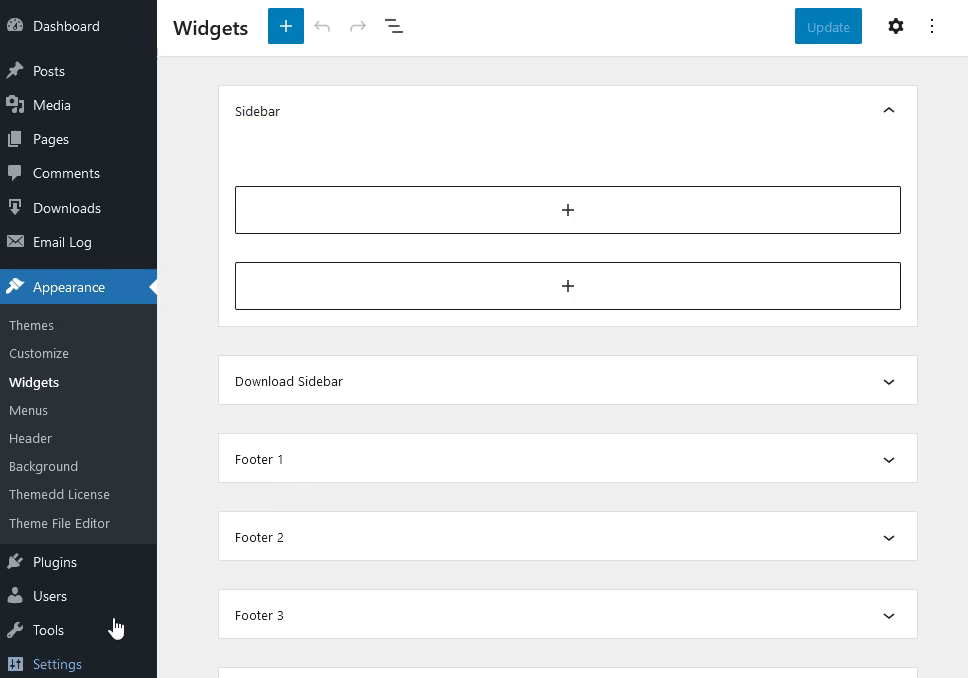
Depending on where you are adding the widget the way it looks on your front-end of the website might be different. In the example below the Widget was added to the Sidebar and we currently have USD, EUR and GBP added.
Clicking on the different currencies will automatically reload the page with all the prices adjusted based on the exchange rates.
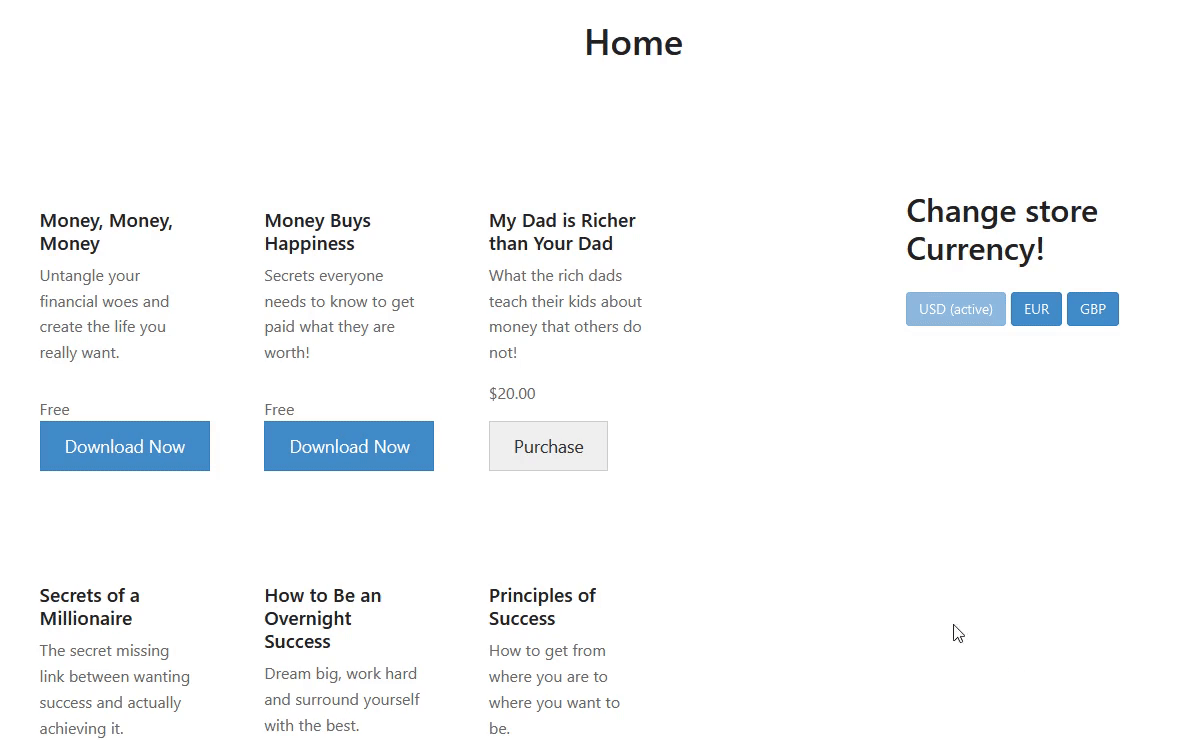
You can also create your currency change buttons/links manually. The way to do it is by setting the URL of the link/button to your website and passing the currency parameter.
https://yourstoreurl/?currency=EUR will load with prices changed to EUR
https://yourstoreurl/?currency=GBP will load with prices changed to GBPYou can use the examples above to change to any other currency that you have added to the Multi Currency extension beforehand.
This extension will convert the entire store the the currency that the customer chooses and that will be the currency that will be passed to the Payment Gateway for processing. You payment gateway account must be able to take payments in that currency.
When used with Recurring Payments the currency, amount and the exchange rate is recorded on the order. When a renewal payment comes in it will be displayed in the same currency as the initial order.
In viewing the reports, a store owner can view reports by individual currency (so in the amounts charged for each currency) or a combined/aggregate report for all orders in all currencies, converted to the store’s default currency. The reports would use the exchange rate stored with the order.